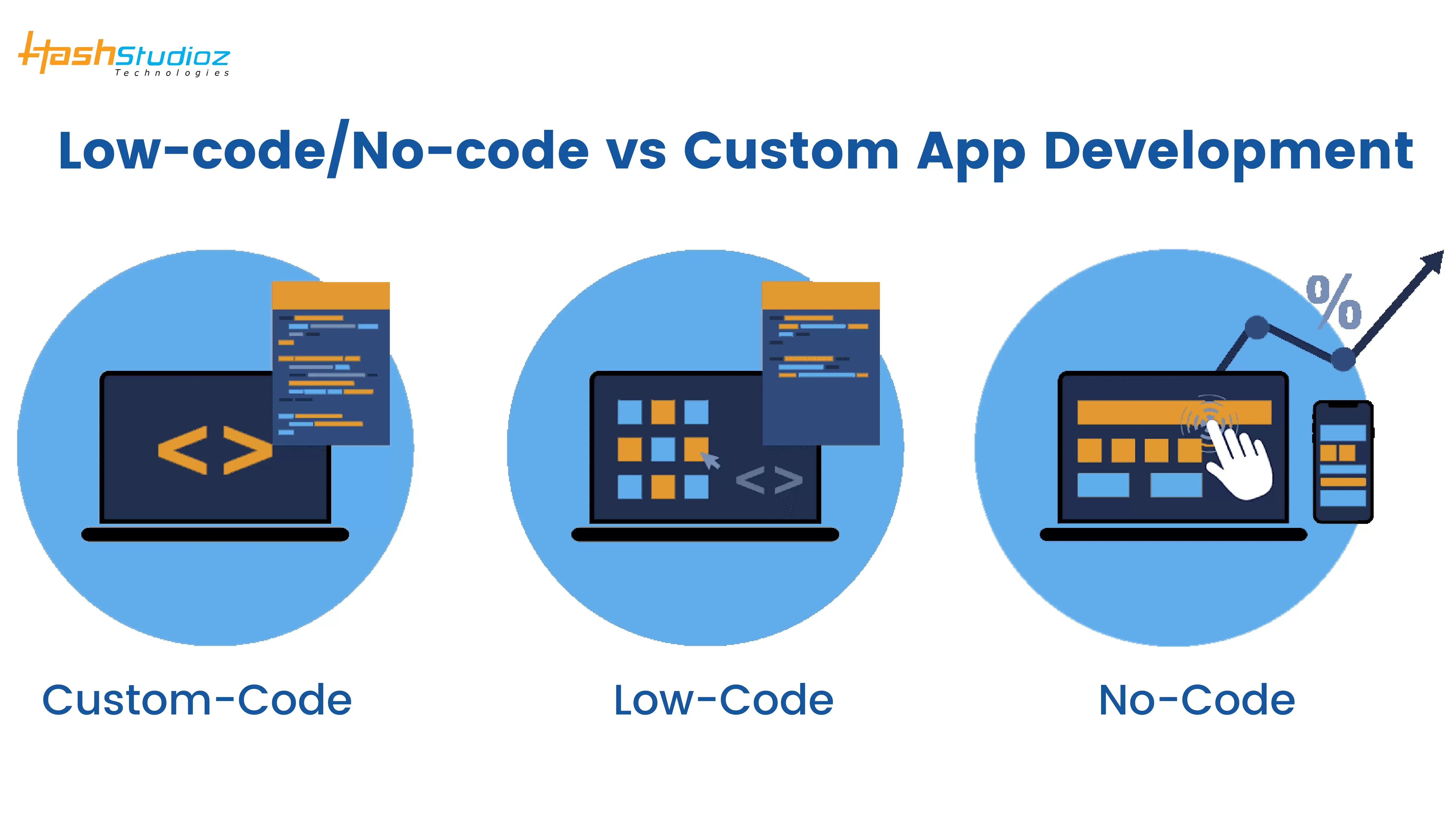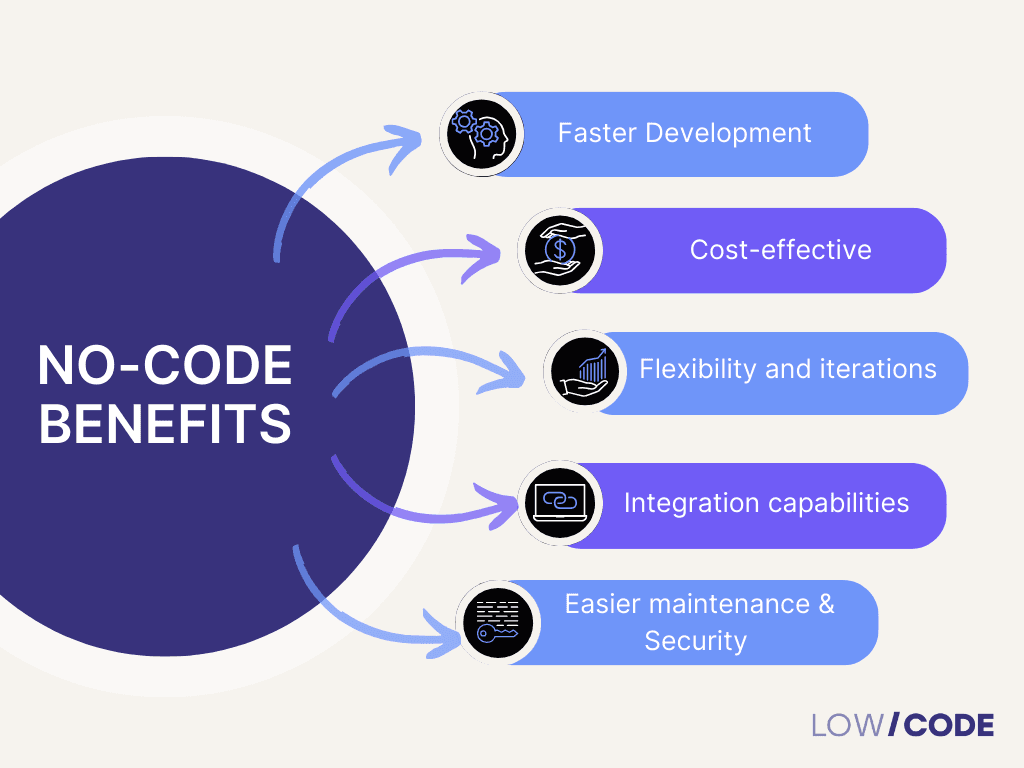The Rise of Low-Code and No-Code Platforms: Revolutionizing Web Development for the Future
Introduction
In the digital age, the demand for web and mobile applications has skyrocketed, pushing businesses to seek faster and more efficient ways to create software solutions. This is where low-code and no-code platforms come into play, offering a revolutionary approach to development that empowers individuals without traditional coding skills to participate in software creation. The emergence of these platforms is not just a trend but a significant shift that’s redefining the landscape of software development. In this post, we will explore what these platforms are, their impact on the development world, and whether they truly represent the future of web development.

Understanding Low-Code and No-Code Platforms
Low-code and no-code platforms are development environments that allow users to create applications through graphical user interfaces (GUIs) rather than traditional hand-coding. This means that with drag-and-drop tools and pre-built templates, users can build apps quickly and with minimal coding knowledge.
-
Low-Code Platforms: These platforms require some level of coding but significantly reduce the amount of manual coding needed. They are designed for developers who want to speed up their development process by automating repetitive tasks and focusing more on complex logic.
-
No-Code Platforms: These platforms are entirely codeless and cater to non-developers who have little to no programming skills. With pre-configured components and visual modeling, users can create apps without writing a single line of code.
The primary objective of these platforms is to simplify and democratize the development process, making it accessible to a wider audience, including business analysts, project managers, and entrepreneurs.
The Impact of Low-Code and No-Code Platforms on Web Development
-
Faster Time-to-Market: By enabling rapid prototyping and quicker iterations, these platforms drastically reduce the time required to develop and launch applications. Traditional development cycles that would typically take months can now be completed in weeks or even days.
-
Increased Accessibility: With no-code platforms, virtually anyone can create an application. This means that businesses no longer need to rely solely on IT teams to bring ideas to life, fostering a culture of innovation and experimentation within organizations.
-
Cost Efficiency: Low-code and no-code platforms lower development costs by reducing the need for large developer teams. Businesses can now allocate resources more effectively, investing in other strategic areas such as marketing and research.
-
Bridging the Developer Skill Gap: The shortage of skilled developers is a well-known issue in the tech industry. These platforms help mitigate this problem by enabling non-developers to build applications, thereby filling the skill gap and alleviating pressure on development teams.
-
Enhanced Collaboration: These platforms promote collaboration between technical and non-technical teams. By providing a common platform where everyone can contribute, organizations can enhance communication, align goals, and streamline project execution.
Advantages and Challenges of Low-Code and No-Code Platforms
Advantages
-
Empowerment of Non-Developers: Low-code and no-code platforms open the doors for non-technical users to build software solutions. This empowerment not only promotes a do-it-yourself (DIY) culture but also fosters creativity and innovation across various departments.
-
Improved Agility: Organizations using these platforms can pivot quickly and respond to market changes without having to undergo lengthy development processes. This agility gives businesses a competitive edge in responding to customer demands.
-
Integration Capabilities: Most low-code and no-code platforms come with built-in integration options, making it easy to connect with other tools and systems within the business ecosystem.
Challenges
-
Scalability Limitations: While these platforms are excellent for small to medium-scale applications, they might struggle with more complex, enterprise-level solutions. Traditional development methods are still preferable for highly complex and scalable applications.
-
Security Concerns: The simplicity of these platforms can sometimes come at the cost of security. With no-code platforms, there’s a risk of creating unsecured applications due to limited control over the underlying codebase.
-
Customization Constraints: Low-code and no-code platforms can limit the degree of customization possible, as users are often confined to pre-set templates and modules. This can be a hindrance when creating unique or highly specialized applications.

Practical Tips for Leveraging Low-Code and No-Code Platforms
-
Start with Small Projects: Begin by using these platforms for small-scale projects, such as internal tools or MVPs (Minimum Viable Products), to understand their capabilities and limitations.
-
Involve IT for Complex Solutions: While these platforms are designed for non-technical users, it’s advisable to involve your IT department when developing applications that require high security, scalability, or integration with core business systems.
-
Focus on Use Case Alignment: Choose the right platform based on your project’s specific needs. For instance, if the goal is to build a simple workflow automation, a no-code platform might suffice. For more complex business logic, consider using a low-code platform.
-
Ensure Proper Governance: Establish guidelines and best practices for using these platforms to maintain consistency, security, and quality across all applications developed within your organization.
Conclusion
Low-code and no-code platforms are undeniably transforming the web development landscape by making software development more accessible and efficient. While they may not replace traditional development entirely, they serve as powerful tools that complement existing development workflows. By enabling rapid development, fostering collaboration, and reducing costs, these platforms are paving the way for a more inclusive and innovative tech ecosystem. As these technologies continue to evolve, it’s essential for businesses and developers to embrace them thoughtfully, considering both their potential and limitations.
Whether you’re a business leader looking to streamline development processes or an aspiring developer interested in expanding your skill set, low-code and no-code platforms offer opportunities that are worth exploring.